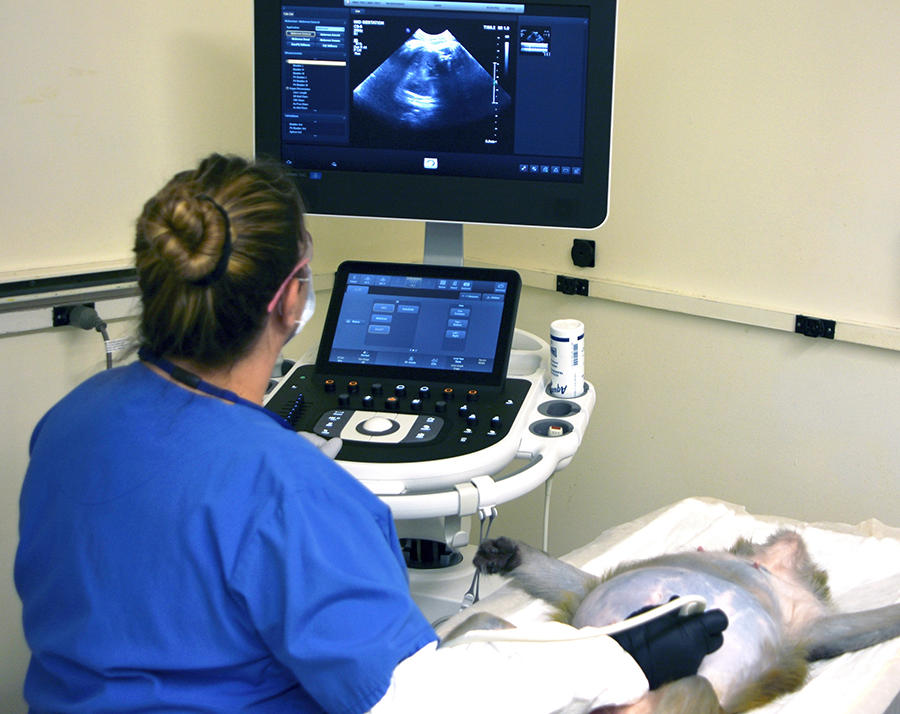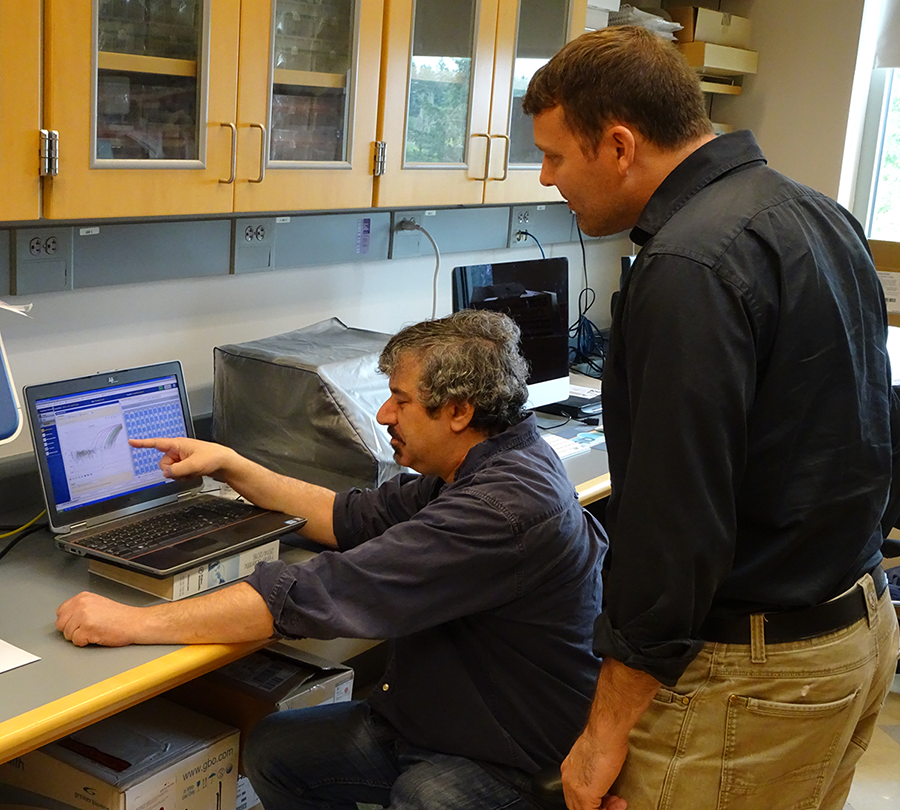Collaborative Data Sharing of Non-Human Primate (NHP) Research Reveals Increased Fetal Loss During Zika Virus (ZIKV) Infection
The National Primate Research Centers (NPRCs)1 Consortium is a collaboration among the California (CNPRC), Oregon (ONPRC), Southwest (SNPRC), Tulane (TNPRC), Washington (WaNPRC), Wisconsin (WNPRC), and Emory (ENPRC) National Primate Research Centers. Funded by the Office of Research Infrastructure Programs (ORIP) of the National Institutes of Health (NIH), the Consortium’s mission is to improve global health through biomedical research with NHPs. Scientists at the Centers conduct pioneering research2–17 that is medically relevant and often a precursor to clinical trials. These scientists are engaged in research that has resulted in numerous scientific achievements, such as the modeling of ZIKV infection in NHPs.
More than 2 billion people worldwide live in regions considered high-risk for ZIKV infection.11 Therefore, ZIKV remains a substantial public health concern. Although much effort has been made to elucidate the protective immune responses to infection, there is still no approved vaccine. Typical symptoms of ZIKV infection include rash, fever, and conjunctivitis, and in rare cases, the neurological disorder Guillain-Barré syndrome. This syndrome causes severe muscle weakness. Congenital outcomes—ophthalmologic abnormalities and hearing loss—are associated with the infection. In some instances, infection can cause catastrophic outcomes during pregnancy known as congenital Zika syndrome (i.e., microcephaly). Microcephaly is characterized by abnormal head and brain development. Not much is understood regarding in utero transmission of ZIKV. However, ZIKV has been connected to a number of reported miscarriages and stillbirths in humans.18–20 Because the majority of ZIKV cases are asymptomatic and miscarriages are common, ZIKV-induced fetal loss is likely underreported. Attributing ZIKV as the cause of miscarriage has not been proven, which highlights the necessity for continual research.

The NPRCs are using NHP models to investigate the immunology, tropism, and transmission of ZIKV, as well as to develop candidate therapeutics and vaccines.3–6, 13–14 While conducting their independent investigations, scientists from CNPRC, ONPRC, SNPRC, TNPRC, WaNPRC, and WNPRC, discovered a high rate of fetal loss in ZIKV-infected pregnant animals. To gain a broader understanding of this fetal loss, these scientists collaborated and pooled their data into a single publication.20 The preparation of a collaborative manuscript was headed by Dr. Dawn Dudley, a senior scientist at WNPRC. Data from these six facilities using multiple species of NHPs revealed a 26 percent rate of fetal loss in ZIKV-infected versus unexposed pregnant animals. The interesting point is that this rate is higher than what is observed with symptomatic human ZIKV cases. The statistical significance of the rate of fetal loss would not have been achieved
if the data were not combined from the individual centers. The scientists noted that more than half of the miscarriages occurred after a mid-gestational period. Strikingly, ZIKV infection that occurred during the first trimester of pregnancy led to fetal demise more frequently. These results suggest that fetal loss caused by ZIKV is underreported and dependent on gestational age at the time of infection. These findings represent a major step forward in understanding the role of ZIKV
in fetal demise. Dr. Dudley believes that the increased rate of miscarriages in the ZIKV NHP experimental model was universally observed across multiple centers. According to Dr. Dudley, "By combining the outcomes of pregnant NHPs across multiple centers, we were able to draw conclusions with statistical significance that no one institute could make on their own—that miscarriage and stillbirth are an important and more frequent outcome of ZIKV infection than is appreciated by human studies focused only on symptomatic women.”

The achievements of this collaboration did not come without challenges. Reaching unanimity among numerous scientists who are experts in their respective fields proved to be logistically challenging. The diverse opinions from these scientists threatened the consensus regarding the “take-home” message for the publication. Adding to this dilemma was deciding which specific data to incorporate into the manuscript from their respective laboratories. Individual laboratories were conducting ongoing studies that were intended for publication. Data aggregation into this manuscript raised the possibility that other publications in progress may not be accepted for publication. This outcome would undoubtedly raise a concern because biomedical research relies almost exclusively on NIH funding, which is linked to publication success rates. Lastly, some scientists initially disagreed with the actual cause for the high rate of fetal loss. Despite the aforementioned challenges, these scientists understood the broader implication and significance of pooling their data. In a climate that often can encourage competition, research collaborations among the biomedical community promote open data sharing and reduce waste of valuable resources. The success of this team effort highlights the necessity for more collaborative science and data sharing. According to Dr. Dudley, “This collaborative effort would not have been possible without the early data sharing among NHP researchers studying ZIKV at nonhuman primate research centers across the country as part of the Zika Working Group."
To help promote scientific data sharing in the biomedical community, the WNPRC uses an online resource called the Zika Open-Research Portal 21 (hosted by LabKey®) that makes ZIKV research data and commentary publicly available for the biomedical community. This “open-lab notebook” provides direct links to ongoing ZIKV-related studies. The collaborative efforts of the fetal loss project and the open research portal represent a form of responsible research, which is necessary to move the frontiers of biomedical science forward. The collaborative report20 represents a major step forward in the elucidation of ZIKV-induced fetal demise. This finding may help design cohort studies and inform clinicians on how to closely examine fetal demise cases in the hopes of identifying viral etiology (i.e., ZIKV infection). The authors of this report presume that the testing of human samples from women who have experienced pregnancy loss and are residing in ZIKV-endemic regions is essential to improve the understanding of ZIKV-related outcome.
References
2Alfson KJ, Worwa G, Carrion Jr. R, Griffiths A. Determination and therapeutic exploitation of Ebola virus spontaneous mutation frequency. Journal of Virology. 2016;90(5):2345–2355.
3Adams Waldorf KM, Stencel-Baerenwald JE, Kapur RP, Studholme C, Boldenow E, Vornhagen J, et al. Fetal brain lesions after subcutaneous inoculation of Zika virus in a pregnant nonhuman primate. Nature Medicine. 2016;22(11):1256–1259.
4Carroll T, Lo M, Lanteri M, Dutra J, Zarbock K, Silveira P, et al. Zika virus preferentially replicates in the female reproductive tract after vaginal inoculation of rhesus macaques. PLOS Pathogens. 2017;13(7): e1006537.
5Bowen JR, Quicke KM, Maddur MS, O'Neal JT, McDonald CE, Fedorova NB, et al. Zika virus antagonizes type I interferon responses during infection of human dendritic cells. PLOS Pathogens. 2017;13(2):e1006164.
6Hirsch AJ, Roberts VHJ, Grigsby PL, Haese N, Schabel MC, Wang X, et al. Zika virus infection in pregnant rhesus macaques causes placental dysfunction and immunopathology. Nature Communications. 2018;19(1):263.
7Kuroda MJ, Sugimoto C, Cai Y, Merino KM, Mehra S, Araínga M, et al. High turnover of tissue macrophages contributes to tuberculosis reactivation in simian immunodeficiency virus-infected rhesus macaques. Journal of Infectious Diseases. 2018;doi: 10.1093/infdis/jix625.
8Rosenzweig ES, Brock JH, Lu P, Kumamaru H, Salegio EA, Kadoya K, et al. Restorative effects of human neural stem cell grafts on the primate spinal cord. Nature Medicine. 2018;24(4):484–490.
9Byrareddy SN, Arthos J, Cicala C, Villinger F, Ortiz KT, Little D, et al. Sustained virologic control in SIV+ macaques after antiretroviral and α4β7 antibody therapy. Science. 2016;354(6309):197–202.
10 Florek NW, Campos LM, Braun KM, McLean HQ, King JP, Flannery B, et al. An updated influenza A(H3N2) vaccine generates limited antibody responses to previously encountered antigens in children. Vaccine. 2018;36(5):758–764.
11Bogoch II, Brady OJ, Kraemer MUG, German M, Creatore MI, Brent S, et al. Potential for Zika virus introduction and transmission in resource-limited countries in Africa and the Asia-Pacific region: a modelling study. The Lancet. Infectious Diseases. 2016;16(11):1237–1245.
12Klasse PJ, Ketas TJ, Cottrell CA, Ozorowski G, Debnath G, Camara D, et al. Epitopes for neutralizing antibodies induced by HIV-1 envelope glycoprotein BG505 SOSIP trimers in rabbits and macaques. PLoS Pathogens. 2018;14(2): e1006913.
13Nguyen SM, Antony KM, Dudley DM, Kohn S, Simmons HA, Wolfe B, et al. Highly efficient maternal-fetal Zika virus transmission in pregnant rhesus macaques. PLoS Pathogens. 2017;13(5): e1006378. doi: 10.1371/journal.ppat.1006378.
14Coffey LL, Pesavento PA, Keesler RI, Singapuri A, Watanabe J, Watanabe R, et al. Zika virus tissue and blood compartmentalization in acute infection of rhesus macaques. PLoS One. 2017;12(1): e0171148. doi: 10.1371/journal.pone.0171148.
15 Magnani DM, Rogers TF, Maness NJ, Grubaugh ND, Beutler N, Bailey VK, et al. Fetal demise and failed antibody therapy during Zika virus infection of pregnant macaques. Nature Communications. 2018; 9(1):1624. doi: 10.1038/s41467-018-04056-4.
16Adams Waldorf KM, Nelson BR, Stencel-Baerenwald JE, Studholme C, Kapur RP, Armistead B, et al. Congenital Zika virus infection as a silent pathology with loss of neurogenic output in the fetal brain. Nature Medicine. 2018;24(3):368–374.
17Seferovic M, Martn CS, Tardif SD, Rutherford J, Castro ECC, Li T, et al. Experimental Zika virus infection in the pregnant common marmoset induces spontaneous fetal loss and neurodevelopmental abnormalities. Scientific Reports. 2018; 8(1):6851. doi: 10.1038/s41598-018-25205-1.
18Van der Eijk AA, van Genderen PJ, Verdijk RM, Reusken CB, Mögling R, van Kampen JJ, et al. Miscarriage associated with Zika virus infection. The New England Journal of Medicine. 2016;375(10):1002–1004.
19Goncé A, Martínez MJ, Marbán-Castro E, Saco A, Soler A, Isabel Alvarez-Mora M, et al. Spontaneous abortion associated with Zika virus infection and persistent viremia. Emerging Infectious Diseases. 2018;24(5):933–935.
20Dudley DM, Van Rompay KK, Coffey LL, Ardeshir A, Keesler RI, Grigsby PL, et al. Miscarriage and stillbirth following maternal Zika virus infection in nonhuman primates. Nature Medicine. 2018; DOI: 10.1038/s41591-018-0088-5.



